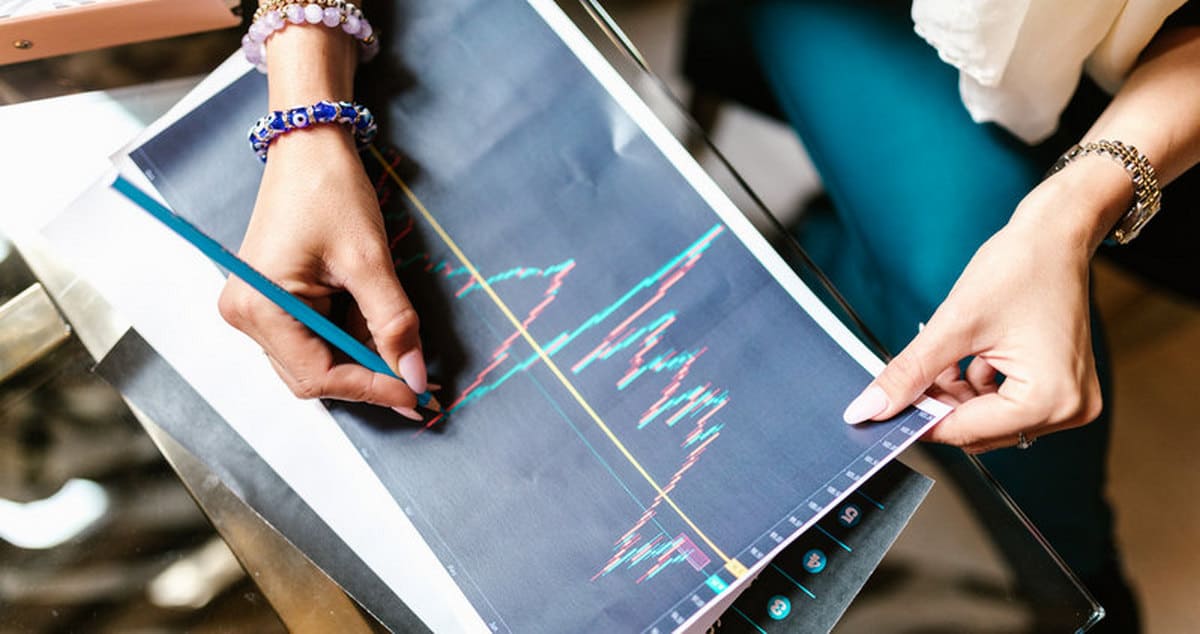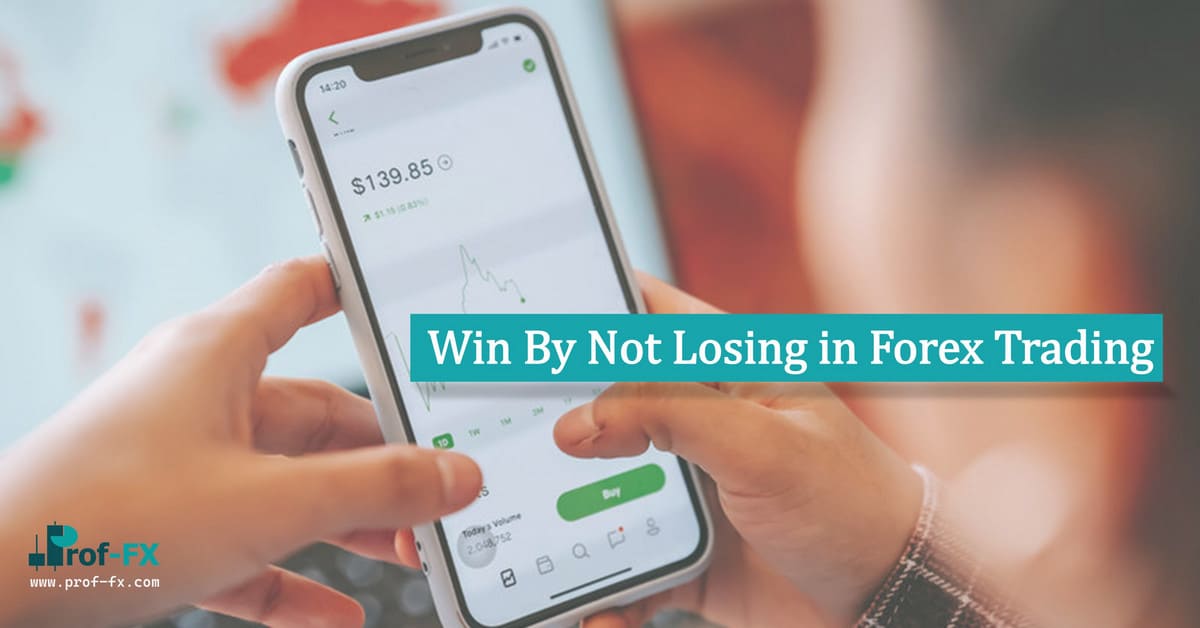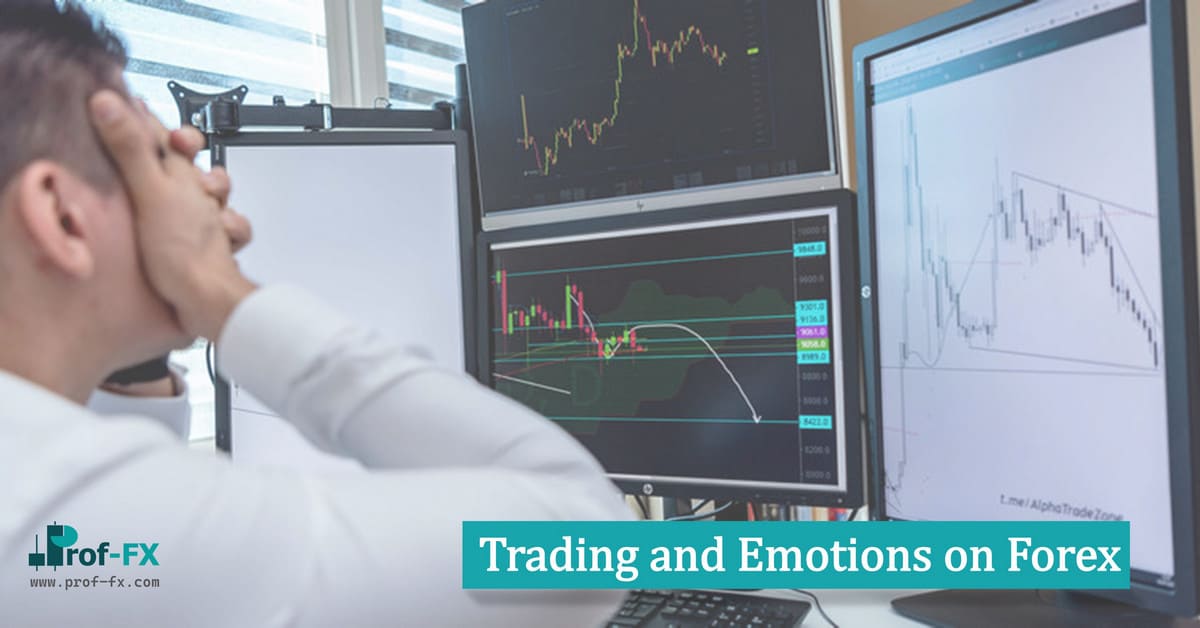Building your trading plan will be by far the most important part of your forex trading success. Too many forex traders are currently entering trades without a clear vision or goal in mind. They have a fear of missing out. They have a “feeling” that their trade is going to be the winning one, raking in loads of pips! When it turns out that the charts didn’t go their way, the first reaction is to quickly try again and forget the losing trade. Keep in mind that the fading affect bias is a powerful cognitive bias! This approach eventually leads to losses, pushing profitability even further away.
These traders lack a trading plan, a well-defined description of the “what” and “how” of their trading business (notice how I said business. You should treat it as such if you want to take forex trading seriously!). In this post, I will guide you through the steps needed to make such a trading plan, and give you a template of how a trading plan could look like.
“The key to trading success is emotional discipline. If intelligence were the key, there would be a lot more people making money trading…”
– Victor Sperandeo
Motivation
Before we get going, I’d like you to think about the “why” of your forex trading. Why are you into forex trading? Maybe you want financial freedom in the long run. Maybe you’d like to be your own boss! Some people want the freedom to travel around and trade. Or maybe you just want to earn some extra money. Whatever you answer, it is that motivation that will keep you going in the long run. This is what will keep you going in one month, one year, three years!
Step 1: write down your motivation at the top of your trading plan
Every time you look at it, you’ll be reminded why you’ve started trading forex. It will be a stimulus to keep you going in this crazy adventure!
Trading is about emotional discipline. If intelligence were key, more people would make money!
Trading goals
We have the motivation to become a successful forex trader, so how about we set some goals? Having clearly defined goals helps in keeping motivated and working towards a defined target. But one remark early on:
Be realistic about your goals!
It is unrealistic to think you can make a living off forex with an initial investment of $50. Or $500. Or even $5000! This should not be news to you, but having realistic goals is actually a good thing! It allows you to reach the targets you set for yourself, meaning you will be all the more motivated! It will also make sure you respect your money management and risk management rules (see below). So with this out of the way, what could be realistic goals for someone starting in forex?
- I want to only make trades that follow my trading strategy
- I want to learn about a new indicator every week
- I want to be consistently profitable after a year
- I hope to increase my capital with 2% every month
Notice how only some goals are actually money related? It’s much more important to focus on the process of following your trading plan than to set goals related to raking in money. If your process is good and the trading strategy works, profits will follow automatically.
Step 2: Set realistic trading goals
What type of trader are you?
What type of trader you are (or aspire to be) is very much related to your personality and the amount of time you’re able to dedicate to forex trading. Essentially, at which timeframes do you feel most comfortable trading? While a day trader is quite comfortable on the hourly or 4H charts, for a position trader this might be way too fast! Similarly, a scalper thrives on the lowest timeframes, something which would likely drive any day trader nuts! Look at these trader profiles and think about what matches your personality and time commitment the most.
Scalper
You feel most comfortable on the lowest of timeframes. You don’t like waiting too long for your trades. You love quick setups and the excitement that comes with it! This also means that you’ll probably want to spend quite some time behind the charts each day. Scalpers will usually look for the lowest possible spread on a currency pair and will therefore trade on the busiest moments of the day on major FX pairs.
Day trader
When most people look at forex trading, this is what they envision doing. Day traders like to open and close trades on the same day. You probably think scalping is nerve-wracking but also would feel uncomfortable leaving your trades open for days on end. You have time each day to look for trade setups and also have the flexibility to keep monitoring them throughout the day. Being a day trader therefore might be challenging to combine with a day job.
Swing trader
A swing trader is traditionally comfortable leaving his trades open for a couple of days, following the “swings” of the market (hopefully in the right direction!). This means that over any period of time, swing traders will take less trades and and plan their trades carefully. Swing trading might be for you if you are patient or you have less time to follow up on your trades. Since the market can temporarily move against your trade, you do need to have the self-control to not jump in and terminate trades early (and miss out on that bigger move afterwards!).
Position trader
Lastly, there’s the position trader. Position traders often hold positions for multiple weeks, even months! Because of those long time frames, position traders often trade on fundamentals instead of technical signals. Position traders must be able to be very patient and must also be able to predict what the market will do for months in advance. Because of big market swings, position traders usually have large stop losses so they need quite some capital.
Step 3: determine what kind of trader you will be, and write it down in your trading plan
Trading strategy
Now this is what you’ve been waiting for! Your trading strategy defines how you choose, open, manage and exit trades. You probably have an idea of how you choose your forex trades, but have you written it down? Are you a discretionary trader or do the rules-based trader? Think to yourself:
If I wrote down my trading strategy right now and gave it to someone else, would they be able to follow it to the letter and get the same results?
A good trading strategy should contain the following things:
- What is my trading setup (timeframe, technical or fundamental indicators)?
- What are the entry rules?
- What are the exit rules?
- How do I determine stop loss and take profit?
- Do I use a trailing stop?
- What are the conditions (if any) where I would terminate the trade early?
An example trading strategy could look as follows:
– I will trade on the 4 hour (H4) charts
– I will only trade EURGBP and EURUSD
– Indicator: 50 EMA (green line)
– Indicator: 100 EMA (blue line)
– Indicator: Stochastic (5, 3, 3)Entry rules:
– I will not enter a trade on the day of a major news announcement (e.g.: NFP)
relevant to the currency pair I’m planning to trade.
– I will only have one open trade at a time.BUY when:
– Stochastic signal was oversold (< 20) and moves back up (> 20)
– 50 EMA crosses the 100 EMA upwards
– The last candle closed higher than the high of the previous 3 candlesSELL when:
– Stochastic signal was overbought (> 80) and moves back down (< 80)
– 50 EMA crosses the 100 EMA downwards
– The last candle closed lower than the low of the previous 3 candlesOrder conditions:
– I will set a stop loss of 50 pips and a take profit of 150 pips.
– I will use a trailing stop only after the price has gone 50 pips in my favour.Exit rules:
– I will not end a trade early, even if I think the price will go against me.
– The only exception to this is that when I have a trade open on Friday, I will close it before the market closes for the weekend.
Of course, this is a fictional trading strategy and you should in no way actually use this strategy to trade! However, feel free to use this as a template to create your own trading strategy.
Step 4: modify the example trading strategy above so it describes your own personal trading strategy, and write it down in your trading plan
Risk management
Now, before you ever trade live, you should know about risk management. Risk management is all about what percentage of your capital you are willing to lose in any trade and what the R/R (risk to reward) ratio is. Now I can hear you thinking “how much should I risk?”. Great question!
You should never risk more than 2% of your capital on any given trade.
Here’s an example to make things clearer. Let’s say you have a micro account that has USD as base currency. This means that 1 Lot is equal to 1.000 units of currency. Now, for 1 lot of EURUSD, the pip value can be calculated as follows (where pip in decimal places is given to be 0.0001):
= (0.0001 * 1000) / 1
= $ 0.1
If you use a stop loss of 200 pips, this means that you could lose at most $20. If your account balance is $500, you would risk 4% of your account! Conversely, if you set a stop loss of 100 pips, you could only lose $10, which equates to a maximum risk of 2%, which is acceptable.
Calculating with pips takes some getting used to and I’m planning to dedicate a separate article to this subject to make it more clear. For now, keep in mind that you should never risk too much on your trades!
Another aspect of risk management is the risk to reward ratio (or R/R). Most people think that in order to be profitable in forex trading, you should have at least more than 50% of winning trades. This is not always the case! The reason for this has all to do with your R/R ratio. Let’s say you set a stop loss of 50 pips and a take profit of 100 pips. Effectively, your R/R ratio would be 50/100, simplified to 1/2. Having a bigger potential reward makes it possible to have more losing trades than you have winning trades, and still have a profitable strategy!
Step 5: think about the maximum risk you’re comfortable to take and write it down in your trading plan
Trading journal
You’re almost there! Most of the puzzle pieces for your trading plan are now in place, but I want to talk about the trading journal. A trading journal is a logbook for your trades. Keeping a trading journal is an essential routine to become a profitable trader because it allows you to make notes other than just the information about the trade itself.
Why should you keep a trading journal:
- It provides you with a historical record of what you have done, so you can use it to analyse past trades and see what you did right and where things went wrong
- A journal allows you to make notes about your sentiment and emotions while trading. Did you expect to lose but ended up winning the trade after all? You should write that down!
- It allows you to check if you followed your trading strategy correctly, and make adjustments as you go along.
I like to write down my trades in my trading journal using the following heading categories:
– strategy: why did I took this trade? does it match my trading strategy?
– risks: regardless of the strategy, can I see any risks?
– emotions: how do I feel about this trade?
– updates: here I write updates as the trade goes along
– chart: contains screenshot of the chart
Keeping a trading journal is essential to following your trading plan. It requires discipline but eventually becomes a habit and in the end will prove a valuable resource for you to look back to!
Step 6: For each trade you take, use the template above to keep track of it in your trading journal
Summary
You need a trading plan. Here’s my 7-step plan how to do it:
Step 1: think about your motivation to trade forex
Step 2: define realistic goals you can actually reach
Step 3: determine what kind of trader you are
Step 4: write down your trading plan using my template
Step 5: make sure to keep your risk management in check
Step 6: start your trading journal
Step 7: pat yourself on the back. You did it!










